West Baden Springs Hotel is an iconic landmark in Orange County, Indiana. At the turn of the twentieth century, newspapers referred to the magnificent architectural marvel as the “Eighth Wonder of the World.” As I visited this magnificent site listed on the National Register of Historic Places, I could easily understand the association with the Wonders of the World.
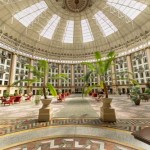
Hotel Atrium
In 1855, Mile Lick Inn was built to capitalize on the abundance of mineral springs in the area. The name was later changed to West Baden Springs Hotel after the German mineral spa Wiesbaden (Baden-Baden). New tourist traffic arrived in the area when the Chicago, Indianapolis, and Louisville Railway established an extension of its line called the Monon Railroad. West Baden Springs Hotel quickly rose in national prominence, drawing guests from all over the country and around the world. The rich and powerful would arrive in their own Pullman railroad cars. The hotel marketed the nearby mineral springs as their main attraction.
Lee W. Sinclair purchased the hotel in 1888 and transformed West Baden into a sophisticated resort, adding an opera house, a casino, a two-deck pony and bicycle track, and a full-size baseball field. By the end of the century, the Cincinnati Reds, the Chicago Cubs, and the Pittsburg Pirates hosted their spring training regimens at the West Baden Springs Hotel. Much of the structure was destroyed by fire in 1901.
After the disastrous fire, Sinclair decided to build the hotel of his dreams fashioned after the greatest spas in Europe. Architect Harrison Albright was commissioned to complete the project. Sinclair and Albright transformed the layout into the circular edifice that currently exists today. Sinclair also hired bridge engineer Oliver Westcott to construct a new fireproof dome that would awe the hotel guests. When the dome was finished, it stood at an amazing 200 feet in diameter. It was the world’s largest free-spanning dome for more than 50 years. The spacious atrium was known as the “Pompeian Court.” The new hotel opened for business in June of 1902.
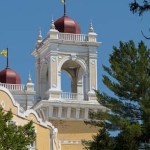
Moorish Revival tower
The hotel’s Moorish Revival structure is a circular six-story brick and concrete edifice. The exterior features a dynamic arched roof with a glass dome rising over the center structure. The guestrooms were built in a concentric circle around the main atrium. The inner ring of guestrooms provided views of the hotel’s interior below. About forty of the rooms have balconies that extend out toward the center of the hotel. There are Moorish Revival towers along the main entrance creating a grand entry to the opulent hotel. An elaborate tile veranda overlooking the sunken gardens is on either side of the main entrance.
The luxurious interior décor gives the hotel an ancient courtyard-like appearance with its Greco-Roman design. A large ornately designed pinwheel filled with lights hangs from the center of the dome. Below the dome is a mosaic terrazzo tile floor composed of two million one-inch squares of marble. The atrium is supported by large Doric pillars that are wrapped with canvas and painted to resemble marble. An intricate and colorful pattern is on either side of the columns. Some of the rooms have balconies that overlook the spacious atrium. Plaster carvings surround the atrium. A huge ornate carved fireplace sits on one side of the atrium faced with glazed ceramic tiles from the Rookwood Pottery Company. Palm trees and orchids add an exotic touch to this impressive area. It is easy to spend hours in the atrium gazing at the lavish details of the space. At night, the atrium becomes even more magical as guests take in the dazzling lights above.
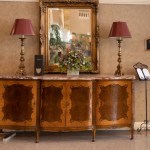
Dining room buffet
Other areas of the hotel are equally elegant. The dining room has Corinthian columns. The capitals are lush acanthus leaves and flowers are gilded. There is a spa on the opposite side of the hotel, which includes both an indoor and an outdoor pool, sauna, and mineral baths.
A stroll through the sunken gardens is a pleasant way to enjoy the evening. A meticulously manicured sunken flower garden spreads out in front of the hotel. The bricked walks are lined with boxwood hedges, impatiens, ornamental grass, hibiscus, and cleome. A fountain is the center point of the garden with ornamental frogs and the turtles spitting water at each other. On the northeast side of the garden is a pavilion with limestone columns and domed roof, which is the site of the Apollo mineral spring. This spring was named after the Greek god of the sun, prophecy, music medicine and poetry. The Hygeia springhouse sits on the west side of the gardens. The interior is lined with Tiffany Bricks, hand-molded with a glazed white surface. Each of these bricks cost about $100 at the time the Hygeia springhouse was constructed. This is an example of how the Sinclair family spared no expense in making the hotel among the world’s elite resorts. The Billiards and Bowling Pavilion is on the south end of the garden.
West Baden Springs Hotel became a preferred destination of the wealthy, the famous, and infamous. They came to relax, play golf, gamble, enjoy fine dining, and be entertained. Diamond Jim Brady, and Al Capone were frequent guests. Other guests included New York’s governor, Al Smith, General John J. Pershing, writer George Abe, heavyweight boxing champion Joe Louis, and entertainer Eva Tanguay. The adjacent French Link Hotel Resort visitors included Joe and Rose Kennedy, Franklin Dr. Roosevelt, Harry Truman, Richard Nixon, the Reagans, John Barrymore, Abbot & Costello, Bing Crosby, Bob Hope, Howard Hughes, Lana Turner, Hoagy Carmichael, Duke Ellington, and Louis Armstrong.
The 1929 stock market crash undermined the resort financially. The West Baden Springs Hotel eventually closed in 1931. With no prospective buyers in sight, the property was donated to the Jesuits as a seminary. Eventually, the Historic Landmarks Foundation of Indiana stepped in to buy the location. They partnered with the Cook Group to restore the West Baden Sprints Hotel to its former glory. This has once again made West Baden Springs Hotel a world-class destination.
Photographing the West Baden Springs Hotel requires an ultra-wide-angle lens to capture the immensity of the space. One also needs a midsize or telephoto lens to capture the ornate detail. To photograph rooms with windows, it is helpful to use high dynamic range (HDR) to balance the outside exposure to the interior lighting. Like all architectural photography, attention must be paid to perspective to prevent or minimize lens distortion. Early morning or late afternoon light is generally best for exterior images. Photographs taken at twilight have a special charm that is fitting for such a magnificent structure.
Or, if you are searching for existing photographs of West Baden Springs Hotel, you can find many examples on In Dancing Light Photography stock images.
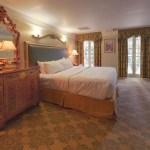


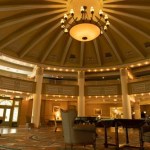
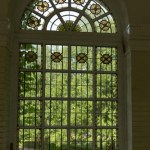
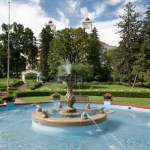
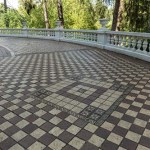
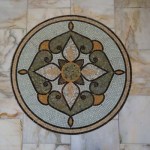
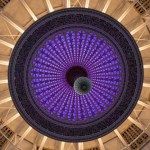
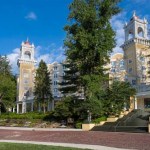
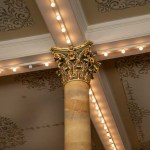
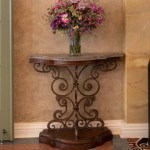
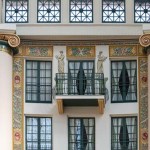

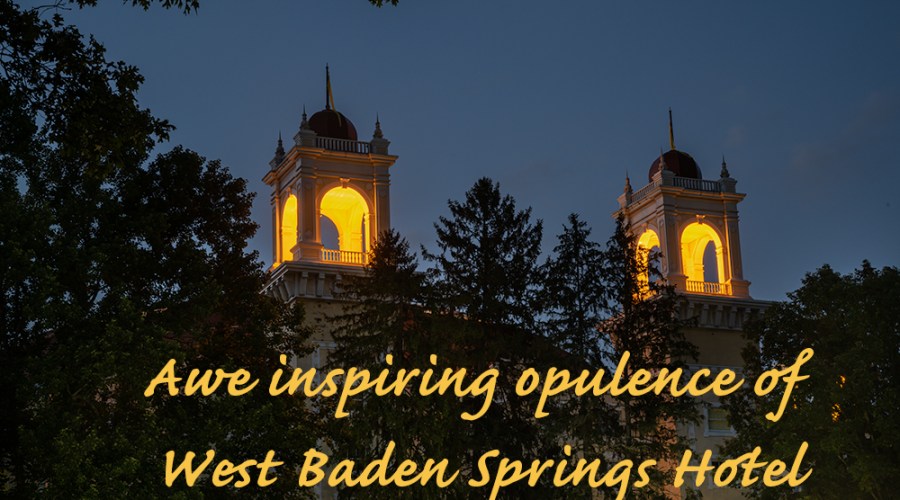
0 Comments